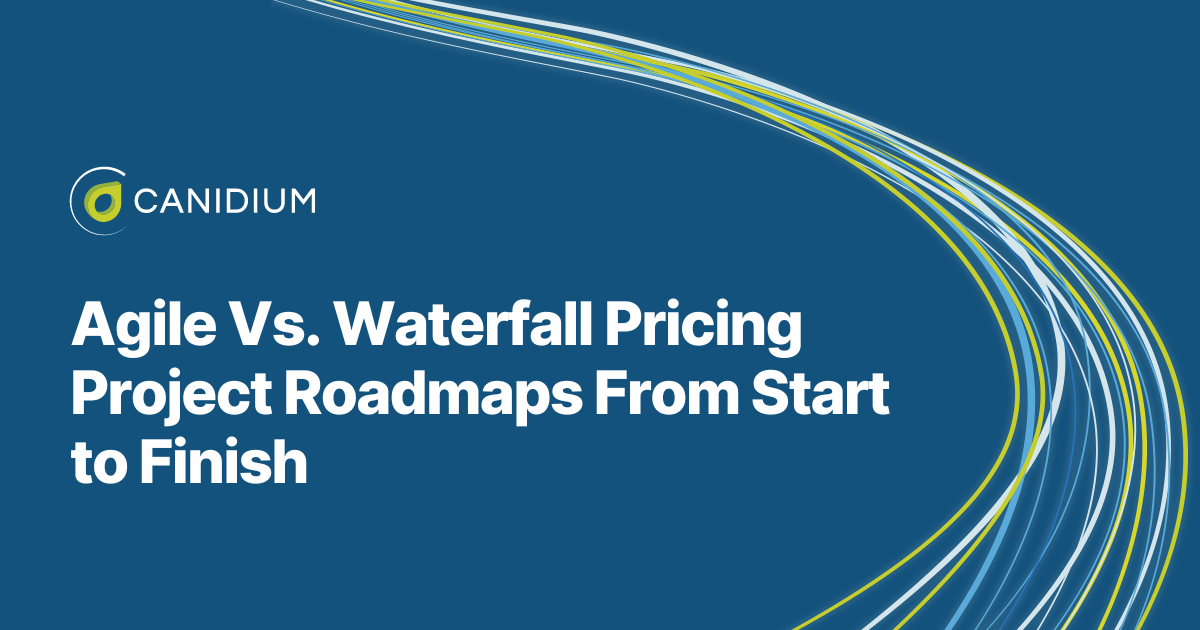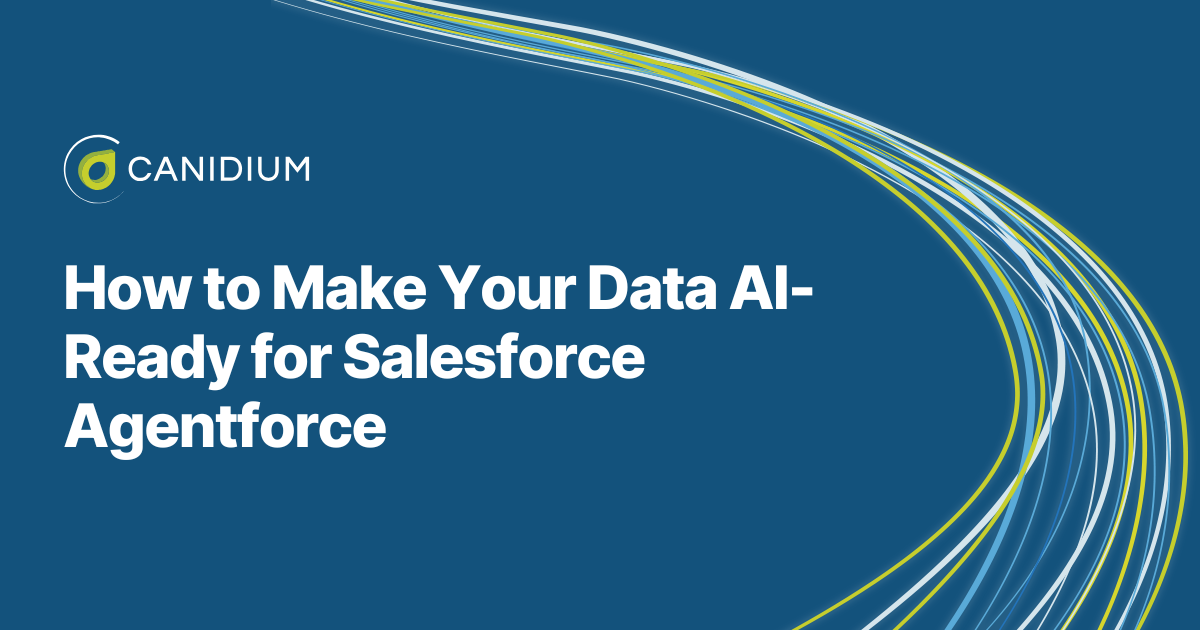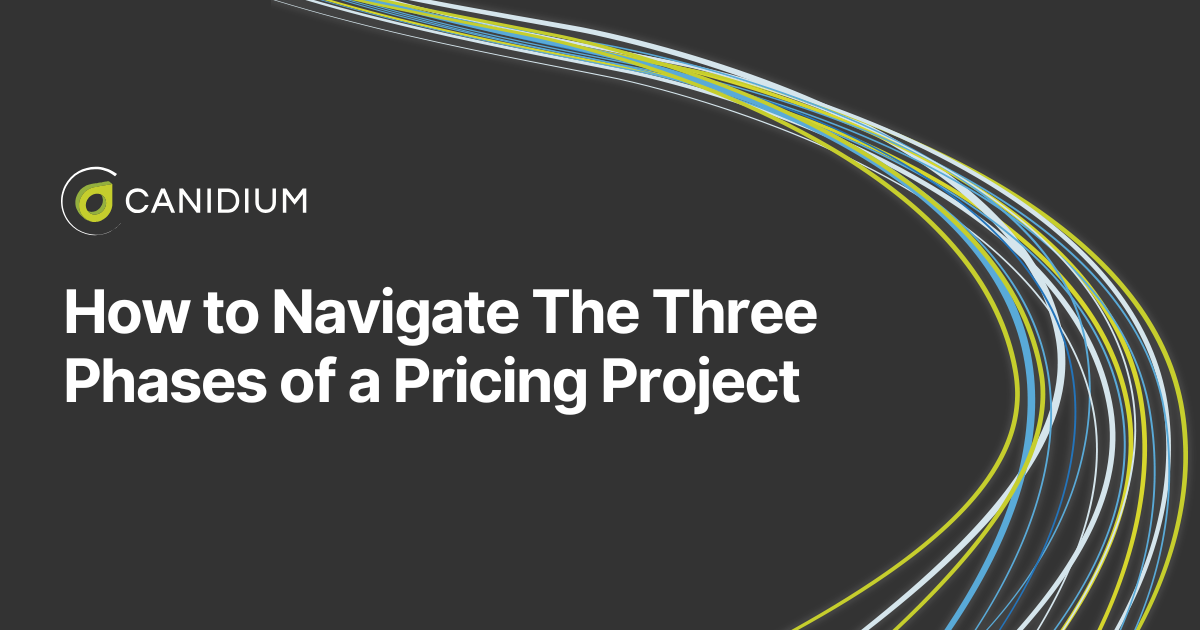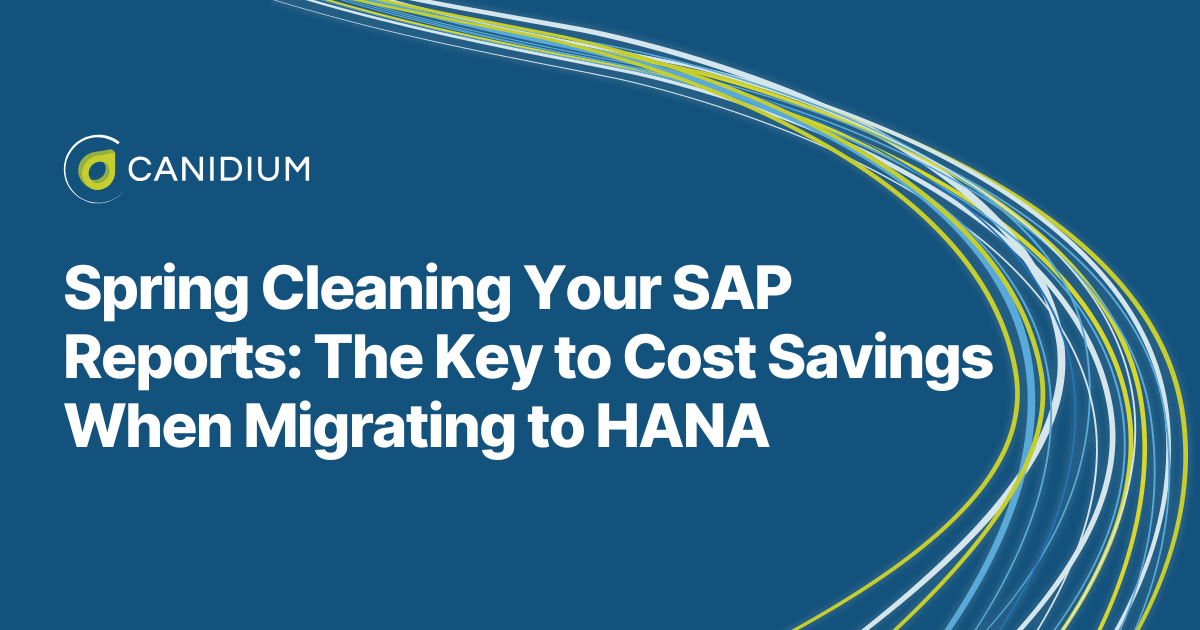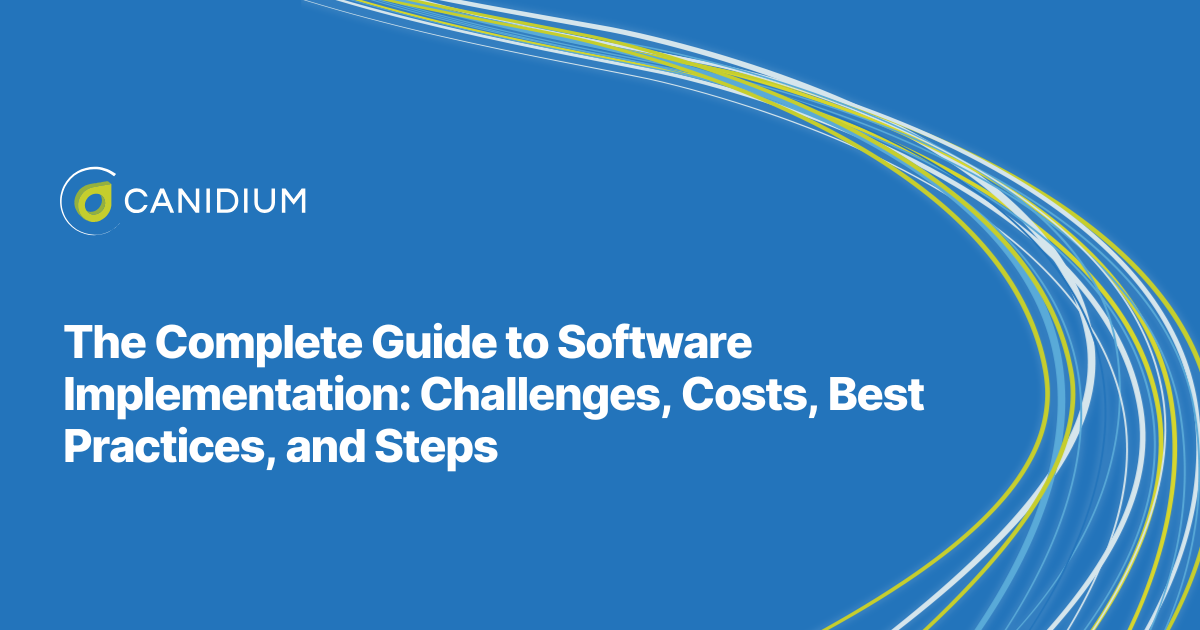Embarking on a Pricefx implementation can be overwhelming. Gathering requirements, designing, configuring, and testing your new solution is incredibly complex, and you must prepare to oversee the change effectively.
Knowing what your company needs to prepare for over the next few months is vital. At Canidium, our team of pricing solution experts helps clients successfully navigate implementation timelines. We prepare clients for the implementation process and guide them through each step.
To give you a thorough understanding of what the next few months will look like, this article breaks down the implementation timeline for a pricing solution project for both Waterfall and Agile project approaches by covering the following topics:
- Waterfall vs. Agile workflows
- Should you choose Waterfall or Agile?
- The Waterfall implementation timeline
- The Agile implementation timeline
- Navigating the project roadmap from start to finish
Waterfall vs. Agile Workflows
When embarking on a Pricefx implementation, one of the first decisions is whether to follow an Agile or Waterfall methodology. Each approach has its unique advantages and is suitable for different project scenarios. Understanding the distinctions between these methodologies and when to use each one can help ensure a successful implementation.
To give you an overview of each methodology, here's a breakdown of the differences, advantages, disadvantages, and ideal use cases for each approach:
.png?width=1920&height=1080&name=AspectWaterfallAgile%20(7).png)
Waterfall Methodology
Waterfall is a linear and sequential approach where each phase depends on the deliverables of the previous one. This methodology is characterized by distinct phases such as discovery, design, configuration, testing, and deployment.
Think of the waterfall workflow as a straight line. Each step in the process follows the completion of the last.
When to Use Waterfall:
- Precise and Stable Requirements: If your pricing strategy is well-defined and unlikely to change significantly during the project, Waterfall is an ideal choice. It allows for thorough, upfront planning and documentation.
- Predictable Outcomes: Waterfall provides a clear roadmap with well-defined stages, making it easier to estimate timelines and costs accurately. This predictability is beneficial for stakeholders who prefer a structured and controlled environment.
- Comprehensive Documentation: The methodology emphasizes detailed documentation at each phase, ensuring all requirements and designs are thoroughly vetted before proceeding to the next stage. This record-keeping can help mitigate risks and avoid scope creep.
- Less Flexibility: Waterfall is less flexible in accommodating changes once the project is underway. Any significant changes in requirements (or business conditions!) can lead to delays and additional costs. Therefore, it is best suited for projects with stable businesses that can define their requirements.
Agile Methodology
Agile is an iterative and incremental approach that allows for greater flexibility and adaptability throughout the project. It focuses on regularly delivering small, functional project pieces, known as sprints.
The agile framework started in the early 2000’s and skyrocketed in popularity between 2020 and 2021. In one year, agile adoption within software development teams increased from 37% to 86%. However, this widespread interest does not necessarily make agile development the best methodology for every project.
Think of the agile workflow as a cycle. You will go through several iterations of the same sequential process, optimizing the project each time.
When to Use Agile:
- Evolving Requirements: Agile is better if your pricing strategy or business needs are still evolving–or you’re not quite certain what you want yet. It allows for continuous refinement and adaptation of requirements as the project progresses and your users provide feedback.
- Incremental Deliverables: Agile provides working components of the project at the end of each sprint, offering tangible progress and allowing for early testing and feedback.
- High Flexibility: Agile accommodates changes more quickly. If new priorities or insights emerge, your implementation partner can integrate them into the project without significant disruption. This advantage makes Agile ideal for dynamic environments where flexibility is critical.
- Collaborative Environment: Agile promotes close collaboration between the project team and stakeholders. Regular sprint reviews and planning sessions ensure continuous alignment and stakeholder engagement.
Should You Choose Agile or Waterfall?
Agile is ideal if you already have a clear vision of what you want to implement and a well-articulated pricing strategy. On the other hand, if you are still refining your pricing strategy or priorities, a detailed discovery workshop aligned with a Waterfall approach is recommended. This workshop helps you clarify your goals and ensures all requirements and design elements are well-documented before moving into configuration and development.
Ultimately, the choice between Agile and Waterfall should be guided by your project's specific needs, the clarity of your requirements, and your preference for flexibility versus predictability. By carefully considering these factors, you can choose the methodology that best supports a successful Pricefx implementation.
The Waterfall Implementation Timeline
The waterfall method is ideal for projects with well-defined requirements and minimal expected changes. Each phase of the Waterfall methodology—discovery, define, design, configuration, testing, deployment, and managed services—builds on the previous one, ensuring that all aspects of the project are thoroughly planned and executed.
To give you a comprehensive idea of what the waterfall method looks like in practice, here is a breakdown of each phase of the Waterfall timeline:
.png?width=1920&height=1080&name=AspectWaterfallAgile%20(8).png)
Discovery Workshop
Your discovery workshop is the first step in your implementation timeline. Depending on how detailed you want your initial requirements, the process can take anywhere from 2 weeks to 4-6 weeks. This work can be done either as a “stand-alone” discovery project or as the first phase of the entire project. Either way, it occurs prior to any design or configuration taking place.
During the workshops, your implementation partner will gather as much information as possible about your pricing vision, requirements, and general IT landscape. The focus is on understanding your pricing requirements, data, and setting the foundation for the project. This phase includes meetings with key stakeholders to capture high-level requirements and develop a preliminary understanding of the project scope.
our implementation partner will use the time to dive deeper into your requirements and data. This intensive discovery workshop will produce comprehensive and documented technical strategies and requirements that span your implementation project's breadth. You will end your discovery phase with written documentation including a Functional Requirements Document (FRD) and a Technical Design Document (TDD).
This approach is more aligned with a Waterfall methodology, where significant requirements and design work are completed upfront before moving on to configuration and development.
Once the discovery phase is complete, the next step is formalizing the project with a Statement of Work (SOW). The time to get the SOW signed can vary. Still, it typically involves some back-and-forth to ensure all details are accurately captured and agreed upon. This document outlines the project scope, timeline, deliverables, and costs, providing a clear roadmap for the implementation.
Foundation Sprint
The foundation sprint is a critical initial Waterfall and Agile project implementation phase. It serves as the bridge between the preliminary planning stages and the detailed execution of the project. It turns the roadmap created in the discovery phase into solid groundwork for the subsequent phases of the project.
In the Waterfall implementation, the foundation sprint, lasting 2-4 weeks, transitions planning to detailed execution. It focuses on refining project requirements from the discovery workshop, preparing data interface specifications, and establishing a comprehensive project plan.
Key activities include reviewing and elaborating requirements with stakeholders, defining data interfaces and sources, and laying the groundwork for the design phase. This sprint ensures all prerequisites are met, risks are minimized, and the project scope aligns with client expectations, providing a solid foundation for the subsequent design phase.
Design
In the Waterfall implementation, the define phase is a distinct, upfront stage dedicated to comprehensively documenting all project requirements. This phase involves extensive collaboration with stakeholders to ensure every aspect of the project is clearly understood and documented before proceeding to the development stages.
The design phase involves gathering detailed requirements, conducting regular validation meetings with stakeholders, and finalizing the project scope. Depending on the project's complexity, this phase typically lasts 4 to 6 weeks.
The design phase in Waterfall is characterized by its static nature, where changes after this phase can be challenging to incorporate. Both methodologies aim to understand and document project requirements through stakeholder collaboration. Still, Waterfall's approach is a one-time, upfront activity that sets the direction for the entire project.
Configuration
During a waterfall implementation, the configuration phase begins after the definition phase. It involves configuring the Pricefx solution according to the detailed requirements and design documents. This phase is highly structured and follows a clear plan in the FRD and TDD.
During the configuration phase, your implementation partner will set up system configurations, develop customizations as specified, and integrate necessary data interfaces. The configuration team works methodically to ensure all components are built precisely as designed.
This phase can vary depending on the project's complexity but typically lasts several weeks to a few months. The Waterfall approach to configuration emphasizes strict adherence to the predefined specifications, minimizing changes and ensuring that the system aligns perfectly with the documented requirements.
Testing
This phase thoroughly and systematically evaluates the system to ensure it meets all specified requirements. It is well-structured and follows a predefined plan based on the FRD and TDD.
Your internal team will put the configured system through its paces, catching any potential errors or problems before it moves into production. They will work through a detailed test plan, identifying and addressing any defects or issues. This phase typically lasts 2-4 weeks, though it can extend depending on the project's complexity and the number of problems encountered. The Waterfall approach emphasizes comprehensive testing to ensure the system is fully functional and defect-free before deployment.
Deployment
During a Waterfall implementation, the deployment phase occurs once UAT testing is complete and go-live has been approved. It involves deploying the fully configured and tested Pricefx solution to the production environment. This phase is highly structured and follows a detailed deployment plan to ensure a smooth transition.
In this phase, your implementation partner will focus on migrating data, setting up user roles and permissions, configuring the production environment, and conducting final system checks. The deployment team will ensure all components function correctly and the system is ready for end-users.
The deployment phase typically lasts about one week. However, this can vary based on the project's complexity and the production environment's readiness. The Waterfall approach emphasizes a well-coordinated, one-time deployment to minimize disruptions and ensure the system is fully operational upon release.
Managed Services
The managed services phase begins after successfully deploying Pricefx. This phase focuses on the system's ongoing maintenance, support, and optimization to ensure it continues to meet business needs.
Your managed services provider will monitor system performance, manage updates and patches, address any issues that arise, and provide user support.
The managed services team also conducts regular health checks and performance reviews to ensure the system operates efficiently. This phase typically involves a fixed number of monthly support hours, often outlined in an annual agreement.
The Agile Implementation Timeline
Agile is well-suited for projects with evolving requirements and a need for regular feedback and incremental progress. Each phase in the Agile methodology occurs in iterative sprint cycles. Typically lasting 2-4 weeks, these sprints enable the project team to deliver functional components incrementally, incorporating stakeholder feedback and adjusting to new insights.
To round out your understanding of the critical differences between the two project workflows, here is the iterative, flexible, agile timeline:
.png?width=1920&height=1080&name=AspectWaterfallAgile%20(9).png)
Discovery Workshop
The discovery workshop is the crucial first step in the Agile project timeline, lasting 3-4 days. It focuses on understanding the client's pricing vision, preparing requirements, usually in the form of user stories, and IT landscape to gather high-level requirements and establish a preliminary product backlog.
During this phase, your implementation partner will focus on engaging stakeholders to capture their vision, conducting collaborative sessions to identify and prioritize requirements, creating user stories and epics, outlining high-level architecture and data flow, and planning initial sprints.
This workshop is ideal for clients with evolving requirements, a preference for incremental delivery, and those who value a collaborative environment. The outcome is a clear, prioritized backlog and aligned stakeholders, setting the stage for a successful, adaptive implementation.
Foundation Sprint
In an Agile implementation, the foundation sprint, lasting 2-4 weeks, sets the stage for iterative development. It refines the initial backlog from the discovery workshop and prepares for the first development sprints.
During the foundation sprint, you and your implementation partner will collaborate with stakeholders to prioritize the backlog, break down epics into manageable user stories, plan initial sprints, define data interfaces, and align the team with Agile methodologies. This sprint ensures the team is ready for development, fosters a collaborative environment, and enables continuous feedback and adaptation to evolving requirements.
The foundation sprint in an Agile implementation lays a strong groundwork for iterative development. It refines the product backlog, plans the initial sprints, and ensures the team is well-prepared to start development. This phase fosters a collaborative environment, enabling continuous feedback and adaptation to evolving requirements, enhancing the project's flexibility and responsiveness.
Design
In Agile, the define phase is iterative and continuous, occurring throughout the project as part of each sprint. Rather than a single, upfront phase, requirement definition happens incrementally, allowing for flexibility and adaptation to evolving needs and insights gained during development.
The initial backlog, which includes high-level epics and user stories, will be created during the discovery workshop and foundation sprint. Ongoing refinement involves continuous collaboration with stakeholders to prioritize and detail the backlog, ensuring user stories are ready for implementation. Each sprint, typically lasting 2-4 weeks, includes sprint planning, feedback integration, and requirement definition activities.
The define phase in Agile allows for continuous refinement and adaptation, contrasting with the static nature of the Waterfall approach. Both methodologies involve stakeholder collaboration to align requirements with business objectives. Still, Agile's iterative process provides greater flexibility and responsiveness to changes.
Configuration
In an Agile implementation, the configuration phase is more dynamic and iterative. It occurs throughout the project within each sprint, typically taking 2-4 weeks. Configuration activities are integrated into the sprint cycles, where user stories are selected, configured, and tested in short iterations.
Key activities your implementation partner will perform during this phase include configuring system components based on the prioritized backlog, incrementally developing customizations, and integrating data interfaces as needed.
Each sprint configures specific features or functionalities, followed by immediate feedback and adjustments. This iterative approach allows for continuous refinement and adaptation, ensuring the configuration evolves in alignment with changing requirements and stakeholder feedback. The Agile configuration phase provides flexibility, allowing the project team to respond to new insights and modifications throughout development. This agility contrasts with the Waterfall's more rigid, predefined nature.
Testing
In an Agile implementation, the testing phase is integrated into each sprint cycle, promoting continuous monitoring throughout the project's duration. Testing activities occur concurrently with configuration, involving immediate evaluation of the configured components within each sprint. This phase involves unit testing, integration testing, and user acceptance testing (UAT) within the context of each sprint.
Following the delivery of each sprint increment, you and your users will execute a defined set of tests for the user stories being implemented, allowing for early detection and resolution of issues. This iterative approach ensures continuous and incremental testing, with regular feedback loops enabling quick adjustments and improvements.
The Agile testing phase provides flexibility, allowing the project team to learn the software and adapt to changes and new requirements, contrasting with the sequential and fixed nature of the Waterfall methodology. The Agile testing timeline is ongoing and follows each of the the 2-4 week sprints, ensuring the system's quality and functionality are maintained throughout the project.
Deployment
In an Agile implementation, the deployment phase is a one-time activity, occurring at the end of UAT. During this phase, your implementation partner will deploy completed user stories to the production environment, update configurations, load data, and perform system checks to ensure the new features integrate seamlessly.
The deployment is followed by monitoring and gathering user feedback to inform subsequent phases or work to be done under Managed Services. This approach ensures an on-time deployment process that ensures a smooth launch of your application in production.
Managed Services
In an Agile implementation, Managed Services are available after deploying the Pricefx solution and completing post-live stabilization. This phase concludes the agile framework and is thus similar to the Waterfall approach.
Like the Waterfall timeline, Managed Services typically involves a fixed number of monthly support hours outlined in an annual agreement. Your implementation team will oversee your continuous maintenance and configuration needs.
Navigating the Pricefx Project Roadmap From Start to Finish
Waterfall is a linear, sequential approach where each phase builds on the previous one. It is ideal for projects with precise, stable requirements, offering predictable outcomes and thorough documentation. However, it lacks flexibility for significant changes.
In contrast, Agile is iterative and incremental, focusing on delivering functional project pieces in regular sprints. It is suited for projects with evolving requirements, providing flexibility, incremental deliverables, and fostering collaboration with regular stakeholder feedback.
For Waterfall, the timeline involves an initial discovery workshop (3-4 days or detailed 4-6 weeks), followed by a foundation sprint (2-4 weeks), design phase, configuration phase (several weeks to months), testing phase (2-4 weeks), deployment phase (about a week), and ongoing managed services.
Agile's timeline includes a discovery workshop (3-4 days), foundation sprint (2-4 weeks), ongoing design phase, iterative configuration within each sprint, continuous testing within sprints, incremental deployment at each sprint's end, and similar ongoing managed services.
Now that you thoroughly understand your Pricefx implementation timeline, your next step is to learn how to keep your workforce engaged in the project throughout the implementation process.


